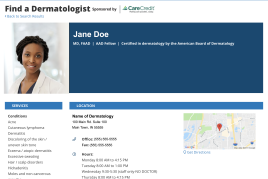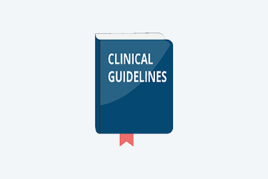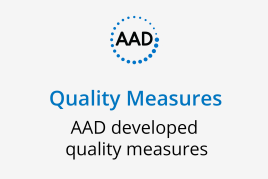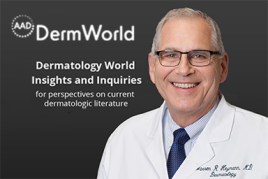Unmasking the complications of personal protective equipment

By Christen Mowad, MD
August 5, 2020
Vol. 2, No. 31


Contact dermatitis can be either irritant or allergic in nature. Several contact allergens have been reported with masks and gloves when used as safety equipment. The most common allergens in a study by the North American Contact Dermatitis Group were rubber allergens (73%), followed by metals (14%). (4) The most common sites were the hands and the face. The final diagnosis was allergic contact dermatitis followed by irritant dermatitis. (4) Irritant contact dermatitis results from inflammation of the skin upon contact with various chemicals. It is often higher in patients with atopic dermatitis. (5) As Kantor states; “The presence of even mild abrasions on the central face may increase the likelihood of face touching while not using PPE or inadvertent PPE protocol breaches, such as mask touching or adjustment, in an unconscious effort to relieve a source of irritation.” (6)
The need for effective PPE is paramount amidst the current pandemic. Avoiding adverse reactions and helping mitigate and treat resulting skin problems in a timely fashion is essential for frontline health care workers and the public. This may include shorter shifts to reduce exposure time. It should also include education regarding good hand care; completely rinsing and drying the hands helps to decrease irritant contact dermatitis. Adequate emollient creams on the hands and face will help improve dermatitis in these areas. Patch testing for allergen identification should also be considered if the clinical picture is concerning for allergic contact dermatitis.
Point to Remember: Until the pandemic is behind us, issues related to PPE will be front and center in our battle against COVID-19. Dermatologists can help our colleagues and patients overcome PPE-related dermatoses with education and vigilance.
Our expert's viewpoint
Danielle M. DeHoratius, MD
I never thought there would be a time in my career when practicing that I could either be seeing patients or double as an extra on Star Trek episode. COVID-19 has caused so many changes in the way we practice as well as the diagnoses we are seeing — from an increased incidence of both contact and irritant dermatitis to “maskne.” Complicating matters is that one of the best management strategies would be to take a break from wearing PPE but that is not possible in the current climate. There is a silver lining: No sunscreen is needed under masks. Dr. Mowad crafted a very thoughtful review of the dermatoses created by the increased PPE that needs to be worn by health care workers. We must keep in mind that there are specific individuals of the general population who may also need to wear such protection including those who are immunocompromised. Thank goodness our pets don’t have to wear PPE, yet!
Lin P, Zhu S, Huang Y et al. Adverse skin reactions among healthcare workers during the Coronavirus disease 2019 outbreak: a survey in Wuhan and its surrounding regions. Br J Dermatol. April 2020. Doi:10.1111/bjd.19089.
Lan J, Song Z, Miao X et al. Skin damage among health care workers managing coronavirus disease-2019. J Am Acad Dermatol82(5): 1215-2016: 2020.
Oranges T, Janowska A, Dini V. Reply to: Skin damage among health care workers managing coronavirus disease-2019. J Am Acad Dermatol 2020, doi:Https://doi.org/10.1016/j.jaad.2020.04.003.5
Warshaw EM, Schlarbaum JP, Silverberg, JI et al. Safety equipment: when protection becomes a problem. Contact Dermatitis 81(2):130-132, 2019.
Visser M, Landeck L, Campbell L et al. Impact of atopic dermatitis and loss-of-function mutations in the filaggrin gene on the development of occupational irritant contact dermatitis. Br J Dermatol 168(2), 2013.
Kantor J. Behavioral considerations and impact on personal protective equipment use: Early
All content found on Dermatology World Insights and Inquiries, including: text, images, video, audio, or other formats, were created for informational purposes only. The content represents the opinions of the authors and should not be interpreted as the official AAD position on any topic addressed. It is not intended to be a substitute for professional medical advice, diagnosis, or treatment.
DW Insights and Inquiries archive
Explore hundreds of Dermatology World Insights and Inquiries articles by clinical area, specific condition, or medical journal source.
All content solely developed by the American Academy of Dermatology
The American Academy of Dermatology gratefully acknowledges the support from Incyte Dermatology.
 Make it easy for patients to find you.
Make it easy for patients to find you.
 Meet the new AAD
Meet the new AAD
 2022 AAD VMX
2022 AAD VMX
 AAD Learning Center
AAD Learning Center
 Need coding help?
Need coding help?
 Reduce burdens
Reduce burdens
 Clinical guidelines
Clinical guidelines
 Why use AAD measures?
Why use AAD measures?
 Latest news
Latest news
 New insights
New insights
 Combat burnout
Combat burnout
 Joining or selling a practice?
Joining or selling a practice?
 Advocacy priorities
Advocacy priorities
 Promote the specialty
Promote the specialty

